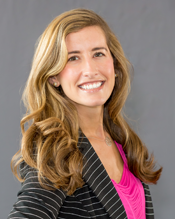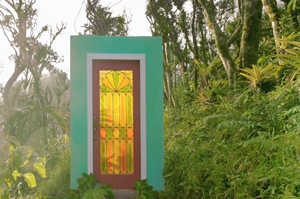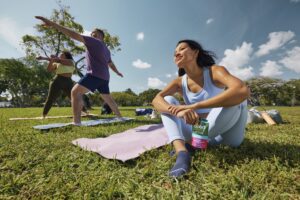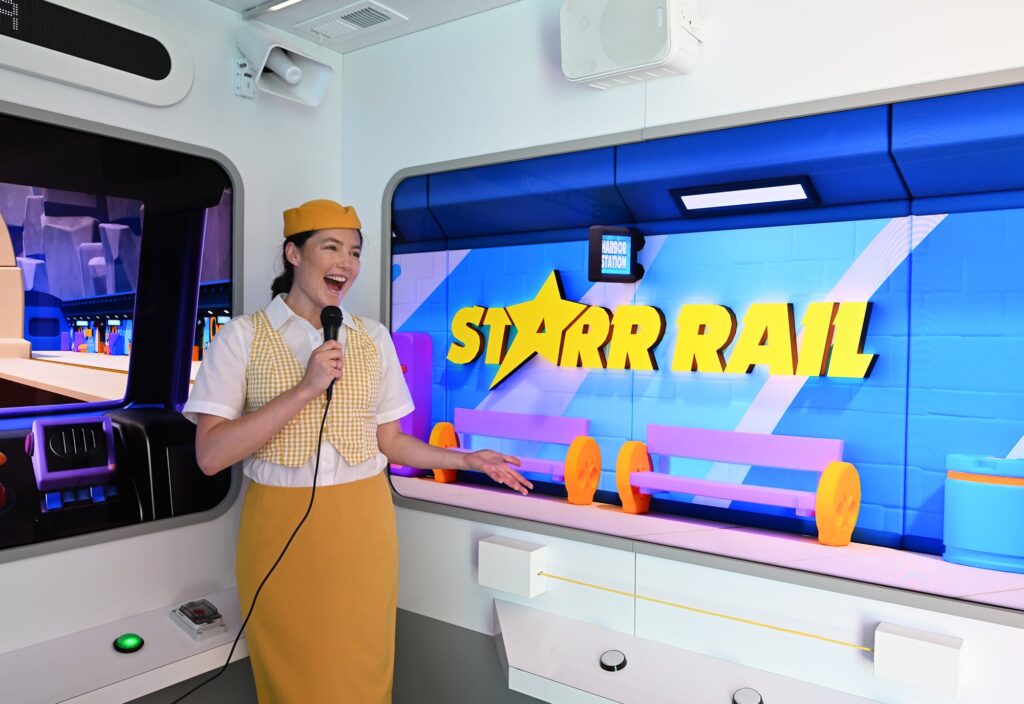It’s closing in on two years since Hurricane Maria slammed into Puerto Rico, killing close to 3,000 people, crippling the island and crushing tourism.
Even prior to Maria, marketing for the island had been sporadic at best. For decades, tourism was managed under the government of Puerto Rico. Every time the administration changed, so too did the tourism director, logos, campaigns, brand identity and messaging. Puerto Rico struggled to find footing in what its brand truly is and creating a consistent message for consumers.
Private industry lobbied hard for a private entity to take on marketing the island. They got what they asked for. The Destination Marketing Organization (DMO) was formed in July 2018. Leah Chandler was hired as CMO as just the second employee behind the CEO. She helped build out the staff for the organization, which now totals a team of 55 people.
Chandler talks about the real challenges she took on, how the team came up with its brilliant strategy to get marketing back on track and the passion the team has for visitors.

CHIEF MARKETER: What is your background?
LEAH CHANDLER: I spent 16 years in the tourism space in destination marketing, originally starting out on the agency side for 10 to 12 years, then moving over to the client side in 2013. Having that agency background in marketing and communications and public relations has been a tremendous asset coming on to the client side of destination marketing.
CM: This had to be a huge challenge. What were your initial thoughts?
LC: Certainly the word challenge came up a lot when I announced my pending move [to DMO]. People said, ‘wow you have got a big challenge in front of you.” I’d be crazy not to look at those challenges and really dig in and understand what those were, but there’s tremendous opportunity too and that has really come to bear since I have taken on the position.
CM: What did you envision the opportunity to be?
LC: I had a conversation with our CEO, Brad Dean, who was the first employee hired, very early on in the interview process. Brad and I quickly aligned on the mission that is the DMO for Puerto Rico and what would later be named “Discover Puerto Rico.” Now this team of 50 plus people has a much bigger opportunity and much bigger mission. It’s not just a job change. It really is an opportunity to change the island for the better for the long term in a really positive way.
CM: What were your first steps?
LC: Research has been critical in where we started with the organization of the DMO. No consumer research, no primary research, had ever been done for the island with regard to tourism prior to the DMO coming on board. So it was really critical right out of the gate before we even opened our doors to start talking to consumers to understand things like brand perception, how they were using existing channels like our website and collateral that we had. We wanted to, talk to people about their perceptions about the island related to the hurricane.
CM: How did you accomplish that?
LC: We really got out and started interviewing people—doing a lot of qualitative and quantitative research—to understand how they felt and what we were up against. We learned very, very quickly that peoples’ perceptions weren’t necessary negative, which is what you maybe would expect following a natural disaster like the island had experienced. It wasn’t positive, it really was right in the middle, it was neutral.
CM: What was your understanding of what neutral meant?
LC: So that neutrality says to me we’re not starting in as negative a place as people might perceive we are. You can look at this as a challenge or you can look at it as a blank slate to really create something that was going to be rooted in a position for the brand, for the island for many, many years to come. We are coming from a place of opportunity to build this out the way that it should have been done many, many years ago and that is really surrounding the culture of Puerto Rico.
CM: What were other key insights from the research?
LC: As we got into the research and started to understand consumers who, of course, know we have beautiful beaches, some of the best in the world. And we learned what really intrigued them to use as a hook —Puerto Rico’s rich culture—the music, the art, the history, the dance and the culinary offerings that could help separate us from the pack and really differentiate the island. We know a lot of brands, especially destinations, can overuse the word authenticity, but we know that Puerto Rico can truly deliver on authenticity and can root our brand in this rich culture. Of course beaches will always be part of our messaging, it is a driver and people do what to come and experience the beaches, but there’s so much more to Puerto Rico than just beautiful beaches.
CM: The first phase of marketing was a publicity effort? When did that take place and how did you execute?
LC: When we first started in July of last year, the publicity effort was really focused on coming up on the one-year anniversary of Hurricane Maria. It was really a call out to the media, to journalists and influencers to cover the progress that had been taking place on the island. And we used the hash tag#CoverTheProgress and an earned media campaign to share with people how far the island had come since the hurricane.
CM: You had some gifts come your way in January. What was going on?
LC: We had a trifecta. Lin-Manuel Miranda came back to reprise his role of Alexander Hamilton for a three week run of Hamilton on the island. Jimmy Fallon came down with his team and did one-hour shows that were later broadcast to the world. And we were named the number one destination to visit by the New York Times. We had all this really, really positive momentum that had been building so things just took off.

CM: In February, you debuted a new website, Discover Puerto Rico, and this month launched the first new major campaign for the island “Have We Met Yet?”
LC: The new campaign builds on all these exciting things and asks the question, ‘do you know Puerto Rico?’ We use the line “we are your neighbors to the south” in some of our copy and remind people not only about the tourism product in Puerto Rico, but also how accessible the island is. It’s surprising how many people in the U.S. don’t realize that Puerto Rico is part of the United States, that we’re a territory and a very quick flight from many cities. We wanted to wrap this up in this idea of reintroducing the island to the world to say, maybe you know us, maybe you saw a news story about us, but Puerto Rico is bigger and better than ever.
CM: You began with a digital push.
LC: Right now we’re in holding pattern. We developed the spot to run in over the top TV and in some select digital executions. We’re waiting on some funding news so right now it’s 100 digital campaign and then eventually traditional TV in the coming months.
CM: When will the TV spot launch and in what markets?
LC: It’s going to roll out in 20 markets where we have direct or robust air service. Many of those markets are focused in the Northeast, but we will also build out to Midwest markets and southern markets, like Atlanta, Houston, Dallas, Miami and Orlando. We want to fish where the fish are. We know a lot of our visitation comes from the Northeast markets, but we do see a lot of potential in some secondary, or opportunity, markets where people haven’t been exposed to our messaging before.
CM: Is the number of visitors the most important metric to determine the success of the “Have We Met Yet?” campaign?
LC: That is the number that we look at. We are able to track campaign performance with sources that look at actual arrivals on the island, as well as the quality and volume of hotel and airline searches and bookings. We look at those conversion metrics.
CM: What other methods will you use to track ROI?
LC: There will also be a quarterly evaluation that measures changes in interest in visiting Puerto Rico. This gets back to that perception question: are people who’ve seen our advertising then becoming more interested in checking out more information. There will also be an annual evaluation around the impact specifically of the campaign—are the messages resonating, is it changing attributes and characteristics that we want people to feel the island is welcoming, inclusive, authentic, all of these attributes that we built the brand positioning around. We have lots and lots of different ways to measure and of course we’re also ultimately looking at economic impact.
Other articles you might enjoy:
- How Wyndham is Uniting All of its Hotels Under One Brand
- 5 Tips to Create Global Brand Equity in Asian Markets
CM: How is the DMO funded?
LC: One-hundred percent of our budget is funded through lodging receipts so that’s a quick and easy method to see if we’re growing that revenue that’s coming into the island in our traditional hotels and also our short-term rentals.
CM: What is your marketing budget?
LC: This a bit in flux on media side, I can tell that from a production standpoint the TV spot and campaign specifically was from $220,000 $250,000 to produce, on the media side it’s a little in flux because we are waiting on news about funding that we have applied for right through relief dollars from federal government. Right now roughly May through October the media budget is going to be around $3 to $4 million if those dollars come in. We have heard that they are available and they are committed, we just haven’t received them officially yet. Our campaign, May through October, would be about $7.6 million.
CM: Puerto Rico is still bankrupt and without electricity in some places. How does that affect how you think about your campaign?
LC: Perception certainly has an impact. Areas that are more remote throughout the island may still struggle with reliability of the power grid but we’re over 99 percent up and running on the grid.
CM: Has tourism bounced back?
LC: The island has been up and running for quite awhile. In fact, just three weeks after Hurricane Maria we had cruise ships coming back into port and that really helped bring tourism back to Puerto Rico immediately following the hurricane. Now, in September of this year we’ll be two years out and the island truly is thriving. Our air service is back to pre Maria levels. We have 110 daily flights coming in to the island from 28 different cities. We had a record number of cruise passengers last year and 4,000 restaurants and 156 hotels are open. Certainly people are hearing the buzz .We’re very, very grateful that people have wanted to immediately, post hurricane help the island.
CM: What does your long-range goal look like?
LC: If we do our jobs well we’ll create an economic driver for the island that has never really been in place and never really met its full potential, which is tourism. If we don’t succeed then we missed probably the biggest opportunity the island will every have. So yes, I knew it was a challenge going in but I also knew that I was equipped and we were hiring a team that was equipped to take that challenge on and really create something magical.




